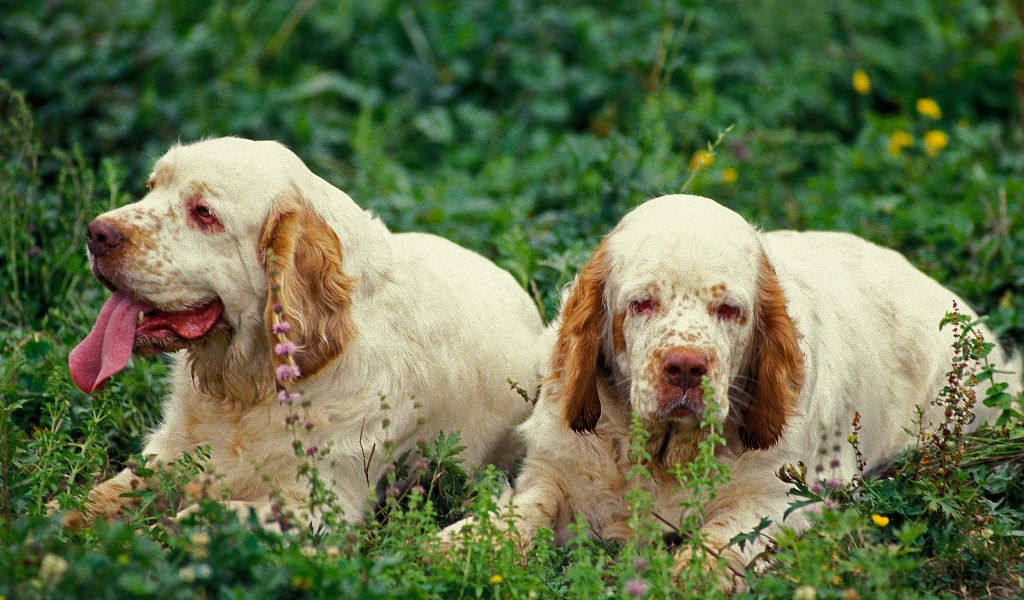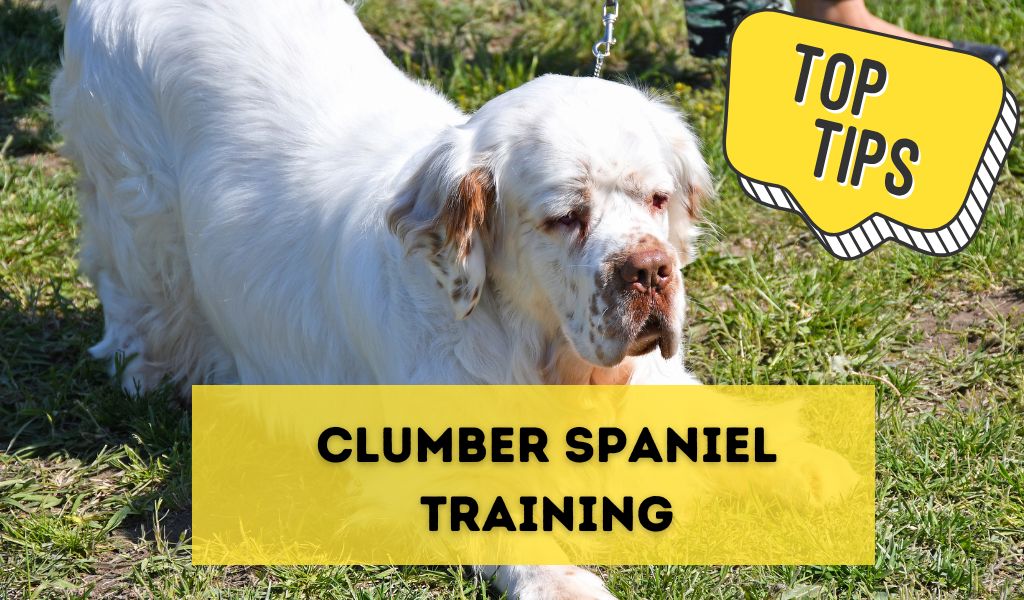Clumber spaniels are one of the most lovable and loyal dog breeds out there.
They are great companions for families with young children and are known for their intelligence, calm demeanour, and versatility as gun dogs.
However, like all dogs, Clumber spaniels require proper training to reach their full potential.
One person who knows a lot about Clumber spaniels is James Darley, the owner of The Venaticus Kennels.
Darley has gained numerous field trial awards with Clumbers, making him an expert in the breed.
While he has some great tips and techniques for training Clumbers, there are some things you can do on your own to train your Clumber.
Get to know the breed
Before we start with the training tips, it is important to understand the Clumber spaniel‘s temperament and behaviour.
Clumbers are known to be stubborn at times, which can make training a bit challenging.
However, they are also intelligent and eager to please, making them easy to train with the right approach.

Positive Reinforcement Training is the best method
Positive reinforcement training is the most effective way to train a Clumber spaniel.
This training method involves rewarding your dog for good behaviour with treats, praise, and playtime.
When your Clumber spaniel performs a command correctly, give them a treat and lots of praise.
Socialisation
Socialisation is another crucial aspect of training your Clumber spaniel. It involves exposing your dog to different environments, people, and other dogs.
Socialisation helps your spaniel to become more confident and well-behaved in various situations.
Take your Clumber to dog parks, puppy classes, and other social events to help them to develop into well behaved and pleasant adults.
Start Training Early
It’s essential to start training your Clumber spaniel as early as possible.
This is when your dog’s personality and habits are still developing, making it easier to shape them into a well-behaved and obedient companion.
You can start with basic obedience commands such as “sit,” “stay,” and “come.”

Lead Training
Lead training is also important for your dog’s safety.
Start by introducing your Clumber to a lead and let them get used to it. Then, take short walks with your dog, gradually increasing the distance.
Use lots of encouragement, praise and rewards when your Clumber walks calmly beside you.
Crate Training
Your spaniel will appreciate having his own space where he can go to rest, sleep and feel safe and an indoor crate or kennel is an excellent way to provide your Clumber spaniel with his own zone.
It is also useful for keeping your dog safe if you are doing jobs around the house that could present a danger to him.
Start by introducing your spaniel to the crate and leaving the door open, if you make his place comfortable with blankets and toys then he is more likely to enjoy using it.
With a little consistency your Clumber will eventually recognise his ‘bed’ and will use it when he feels the need to and will also go there when you tell him to.
Addressing Problem Behaviours
Clumber spaniels can display problem behaviours such as barking, digging, and chewing.
To address these behaviours, you need to understand why they are doing it. Barking may be a sign of anxiety, while digging may be a sign of boredom.
In general these types of behaviours are normally related to an excess of energy and some good walks, training and mental stimulation should reduce them.
Remember too that your vet is always an excellent source of advice for problem dog behaviour.
Training Tips for Specific Commands
Training your Clumber for specific commands may require a different approach.
Here are some tips for specific commands:
Come
Use a happy and excited tone when calling your Clumber to you and always reward him when he does.
Sit
Hold a treat above your spaniel’s head to encourage them to sit.
Use a command such as “sit” and reward them when they obey.
Stay
Start with a short distance and gradually increase it.
Use a command such as “stay” and reward them when they stay still.
Heel
Use a command such as “heel” and walk your Clumber on your left side.
Reward your dog when he walks calmly beside you.
Be Patient
Clumber spaniels are a relatively calm breed, but they can be stubborn at times.
If your dog is having trouble learning a new command or behaviour, be patient and keep trying.
Avoid getting frustrated or angry, as this will only make things worse.
Be Consistent
Consistency is key when it comes to training your Clumber spaniel.
Use the same commands and techniques every time you train your dog.
This will help your dog understand what you want them to do and will make the training process much easier.
Make it Fun
Training should be a fun and enjoyable experience for both you and your dog.
Use games and activities to make training more engaging and exciting.
You can incorporate toys, treats, and playtime into your training sessions to keep your dog interested and motivated.
FAQs
What age should I start training my Clumber Spaniel?
It’s best to start training your Clumber spaniel as early as possible, ideally between 8 and 12 weeks old.
How often should I train my Clumber Spaniel?
Short training sessions of 10-15 minutes, several times a day, are more effective than long training sessions.
Can I train my Clumber Spaniel without treats?
While treats are a powerful tool for positive reinforcement, you can also use praise, toys, and playtime as rewards.
How do I stop my Clumber Spaniel from digging?
Provide your Clumber spaniel with plenty of toys, exercise, and attention to prevent boredom. You can also designate a specific area in your yard where digging is allowed.
Can Clumber Spaniels be trained for specific tasks such as hunting or search and rescue?
Yes, Clumber spaniels are highly trainable and have been used for various tasks such as hunting, retrieving, and tracking. However, specific training is required for each task.
Conclusion and final thoughts
Training your Clumber spaniel is an essential part of responsible dog ownership.
With patience, consistency, and positive reinforcement, you can train your Clumber spaniel to become a well-behaved and obedient companion.
Remember to understand your spaniel’s temperament and behaviour, and tailor your training approach accordingly.
If you are struggling with training your Clumber, consider enrolling them in a puppy class or hiring a professional dog trainer.
With the right training, your dog can be a joy to have around and a great addition to your family.




